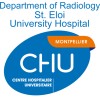
Mirror Box Therapy as a Treatment Option for Functional Movement Disorders
Functional Movement DisorderThe purpose of this study is to investigate the potential of using mirror box therapy as a therapeutic technique amongst patients with functional movement disorders. It is hypothesized that a brief, single, in-office mirror therapy session will lead to a noticeable decrease in FMD-related involuntary movements.

Study of the Ability of a New Technique to Effectively Diagnose Movement Disorders
Functional Movement DisorderSante Fe is an investigation of a new technique to distinguish between different types of movement disorders, specifically organic versus functional, by observing changes in involuntary movements in two different situations.

Sub Occipital Inhibition Technique on Postural Balance
Movement DisordersIn the present study the investigators want to verify if the inhibition of the suboccipital muscles improves the postural balance in subjects with cervical pain objectified by stabilometry.

Bilateral Pallidal Stimulation in Patients With Advanced Parkinson's Disease-LATESTIM
Central Nervous System DiseaseBasal Ganglia Disease3 moreDeep brain stimulation (DBS) is an established treatment for advanced complicated Parkinson's disease (PD). Several controlled randomized studies have given proof of an advantage for operated patients as compared to medically treated patients in terms of motor outcome, activities of daily living and health status. However these studies have addressed mostly stimulation of the subthalamic nucleus (STN). GPi stimulation has not been compared to best medical treatment (BMT) in a prospective randomized controlled trial in patients with complicated PD who are not good candidates for STN stimulation. The investigators aim assessing GPi-DBS in patients with PD who have contraindications for STN-DBS.

A Trial of 18F-AV-133 Positron Emission Tomography (PET) Imaging to Differentiate Subjects With...
Parkinson's DiseasePrimary Parkinsonism1 moreThe purpose of this study is to determine whether 18F-AV-133 PET scans can be used to differentiate subjects with Parkinson's Disease from other movement disorders.

Proprioception and Meditation
Parkinson DiseaseProprioceptive Disorders1 moreIn past work is has been shown that yoga can be as effective as a standard balance or Tai Chi protocol; however, there is an inability to distinguish between the mind and body contributions of yoga training. This study will compare an accepted proprioceptive training program to a meditation program which concentrates on body awareness in individuals with Parkinson's disease.

Early Diagnosis of the GLUT1 Deficiency Syndrome With a Blood Based Test
Glut1 Deficiency SyndromeDe Vivo Disease4 moreThe study aims at validating the diagnostic performances of the METAglut1, a blood in vitro diagnostic test, for the simple and early diagnosis of the Glut1 deficiency syndrome (Glut1DS, or De Vivo disease). The blood test will be carried out prospectively on patients presenting with a clinical suspicion of Glut1DS, blindly from the reference strategy, which consists in a lumbar puncture for glycorrhachia measurement, completed by a molecular analysis. The study will be conducted in more than 40 centers in France on up to 3,000 patients for 2 years.

4 Dimensional - Impairment of Posttraumatic Forearm Rotation Evaluated With Computed Tomography...
Pronation-Supination of the ForearmImpairment ofThe aim of this study is to develop a 4D-CT (4 Dimensional Computed Tomography) -scan acquisition method for estimating the cause of posttraumatic impairment of the forearm. Both forearms of patients with posttraumatic impairment of one of the forearm will be scanned using a 4D-CT-scan, during forearm rotation. Rotation of impaired and healthy forearms will be analysed and compared to each other. This method is intended to allow differentiation of motion patterns reflecting an osseous impairment from those caused by soft tissue pathology in order to improve treatment choice.

Heart Rate Variability in Response to Metformin Challenge
FibromyalgiaMitochondrial Diseases3 moreDiseases caused by brain energy supply defects can be innate (fibromyalgia secondary to familial mitochondrial disorders) or acquired (tardive dyskinesia or weight gain associated with prolonged antipsychotic use). Patients with these possible mitochondrial disorders will provide a baseline resting heart rate sample, ingest low-dose metformin (500 mg), and then provide an additional sample 2 hours later.

Effect of Deep Brain Stimulation on Lower Urinary Tract Function
Movement DisorderUrinary Tract DiseaseThe precise mechanisms underlying cerebral regulation of lower urinary tract (LUT) function are still poorly understood. Patients with deep brain stimulation (DBS) offer the unique opportunity to investigate the role of different cerebral centers on LUT function. We hypothesize that DBS has a significant effect on LUT function and that these effects depend on the specific stimulated cerebral center.
